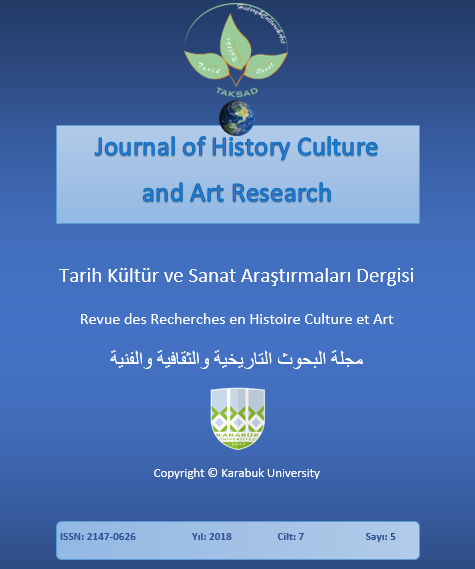Spatiotemporal Demographic Trends and Land Use Dynamics of Metropolitan Lahore
DOI:
https://doi.org/10.7596/taksad.v7i5.1774Keywords:
Spatiotemporal, Demographic trends, Urbanization, Land use dynamics, Metropolitan Lahore.Abstract
The research aims to investigate the pace of rapid urbanization in the mega cities of developing countries. These are facing unprecedented population growth and unplanned rapid urbanization. Pakistan is considered as most urbanized country in Asia. Keeping in view the unplanned urbanization and rapid population growth, study was conducted in metropolitan Lahore which is the second mega city of Pakistan with 82% of urban population to examine the spatiotemporal demographics and land use changes. The secondary data about temporal demographic trends was collected from different government departments and their reports like, Lahore Development Authority (LDA), Cantonment Board Lahore (CBL) Bureau of Statistics Punjab (BOS), Punjab Development Statistics (PDS) and District Census Reports (DCR) Lahore. Spatial primary data was created by geospatial techniques to assess the land use dynamics. 2000 to 2015 Landsat images of 8MSS and 5TM were classified through supervised classification for land use land cover change detection. In-depth interviews were conducted from LDA officials to verify and interpret the temporal population trends and town wise land use land cover changes. Research findings revealed that population of Lahore is continuously rising since 1951 to date due to rural urban migration. The gradual population increase is enhancing civic population density and immense urban sprawl. The research in line with the above-mentioned factors gives the spatial presentation of urban land use land cover changes from 2000 to 2015. The stakeholders should check the alarming speed of urbanization and balance the population agglomeration and land use balance to sustain the city. These perspectives will be helpful to find new way for future project planning and prioritization of the mega cities.
References
Aguilar, A. G (2006). Introduccio´ n. In Aguilar, A G (Coord.) Las Grandes Aglomeraciones su Periferia Regional. Experiencias en Latinoame´rica y Espan˜a, Coleccio´n Conocer para Decidir, Camara de Diputados. Conacyt, Instituto de Geografia-UNAM, Miguel Angel Porrua, Mexico, pp. 5–18
Arif, M. G. & Ibrahim, S. (1999). The process of Urbanization in Pakistan, 1951-98, Pakistan Institute of Development Economics. Islamabad, No.4 Vol. 37.
District Censes Report (DCR 2000). Lahore
Elahi, M. (2010). “Proposed structure of urbanization task force report on urban development” Planning Commission Islamabad Pakistan. Environmental change, current opinion in Environmental Sustainability.
Rong, E. (2008). The impact of urban form on U.S. residential energy use. Housing Factors Debate, 19, 1-30
GOP (2007). Punjab Urban Water and Sanitation Policy by Government of Punjab. Available at Government of Punjab, (2011)” Punjab Development Statistics, 2011” Bureau of Statistics, Punjab, Lahore
Lahore CDG (2007). Solid Waste Management Plan 2007-2021. Lahore, Pakistan
Lea and Courtney (1986). Cities in conflict. Studies in the planning and management of Asian cities, World Bank.
Leautier, A. F. (2006). Cities in a Globalizing World” The World Bank Washington D.C. pp72.
Mahmood, K.; Rana A. D.; Tariq, S.; Kanwal, S.; Ali, R.; Haidar, A.; Ali, H. & Tahseen, T. (2013). Ground water level susceptibility to degradation in Lahore Metropolitan, Sci. Int. 25, 123-126.
M. J., Jr. S. (2010). The impacts of urbanization on groundwater systems and recharge. AQU Amundi, 18, 52-56
Miller, L. M. L. (2012). The Effects of Urbanization on Ground Water in Beijing. http://en.cgs.gov.cn/UploadFiles/2012_12/04/20121204140947781.pdf Access on 1/8/2015
Moglen, G.E. (2009). Hydrology and impervious areas: Journal of Hydrologic Engineering, 14, 303-304.
Morris, B. L.; Lawrence, A. R.; Chilton, P. J. C.; Adams, B.; Calow, R. C. & Klinck, B. A. (1994). Problem and options for management. Early Warning and Assesment Report Series, RS.03-3. United Nations Environment Programme, Nairobi, Kenya.
NESPAK (1991) Groundwater Resources Evaluation and Study of Aquifer under Lahore. Final Report, National Engineering Services Pakistan Pvt Limited NESPAK and Binnie & Partners Consulting Engineers London, UK. 1991.
Putra, D. P. E. & Baier, K. (2007). Impact of Urbanization on Groundwater Recharge – The Example of the Indonesian Million City Yogyakarta. (Unpublished Paper) file:/C:/Users/sar/Downloads/impact%20of%20urbanization%20on%20groundwater%20recharge.pdf Access on 4/1 2015.
Punjab Development Statistics, PDS (2013). Bureau of Statistics, Government of the Punjab Lahore.
Punjab Development Statistics, PDS (2014). Bureau of Statistics, Government of the Punjab Lahore.
Ramsey, M. S. (2003). Mapping the City Landscape from Space: The Advanced Spaceborne Thermal Emission and Reflectance Radiometer (ASTER)Urban Environmental Monitoring Program: in Earth Sciences in the City (Heiken, G., Fakundiny, R., and Sutter, J., eds.), Am. Geophysical Union, Washington, DC, Ch. 9, pp.337-376.
Sherlock, R. L. (1922). Man as a Geological Agent: H.F. & G. Witherby, London, pp372.
Siddiqi, W, M. (2004). Rural-urban migration” (A case study of Lahore district) Pakistan research repository. university of the Punjab.
Slingsby, A. E. (1991). “Shelter for Low income Communities First Interim Report Punjab, Centre for Development and Environmental Planning. Oxford, UK. Special Report 298. National Academies Press, Washington, D.C.
Tembe (2008). Impact of urbanization on groundwater regime in fast growing city in India. Report, Ministry of municipality affairs and urban planning, kingdom Baharain pp 17.
Underwood, J. R. Jr. (2001). Anthropic rocks as a fourth basic class: Environmental and Engineering Geoscience, 7,104-110.
United Nations (2001). World Urbanization Prospects of Population Growth: The 2001 Revision. Population Division, United Nations, 2 United Nations Plaza, Room DC2-1950, New York, NY 10017, USA
WASA (2013). Water and Sanitation Authority Lahore
Uz-Zaman, K. & Anwar. A. (2011). Urbanization of Arable Land in Lahore City in Pakistan: A Case-Study. Canadian Social Science, 7(4), 58-66.
Downloads
Published
How to Cite
Issue
Section
License
All papers licensed under Creative Commons 4.0 CC-BY.- Share — copy and redistribute the material in any medium or format
- Adapt — remix, transform, and build upon the material for any purpose, even commercially.
Under the following terms:
Attribution — You must give appropriate credit, provide a link to the license, and indicate if changes were made. You may do so in any reasonable manner, but not in any way that suggests the licensor endorses you or your use.
- No additional restrictions — You may not apply legal terms or technological measures that legally restrict others from doing anything the license permits.







